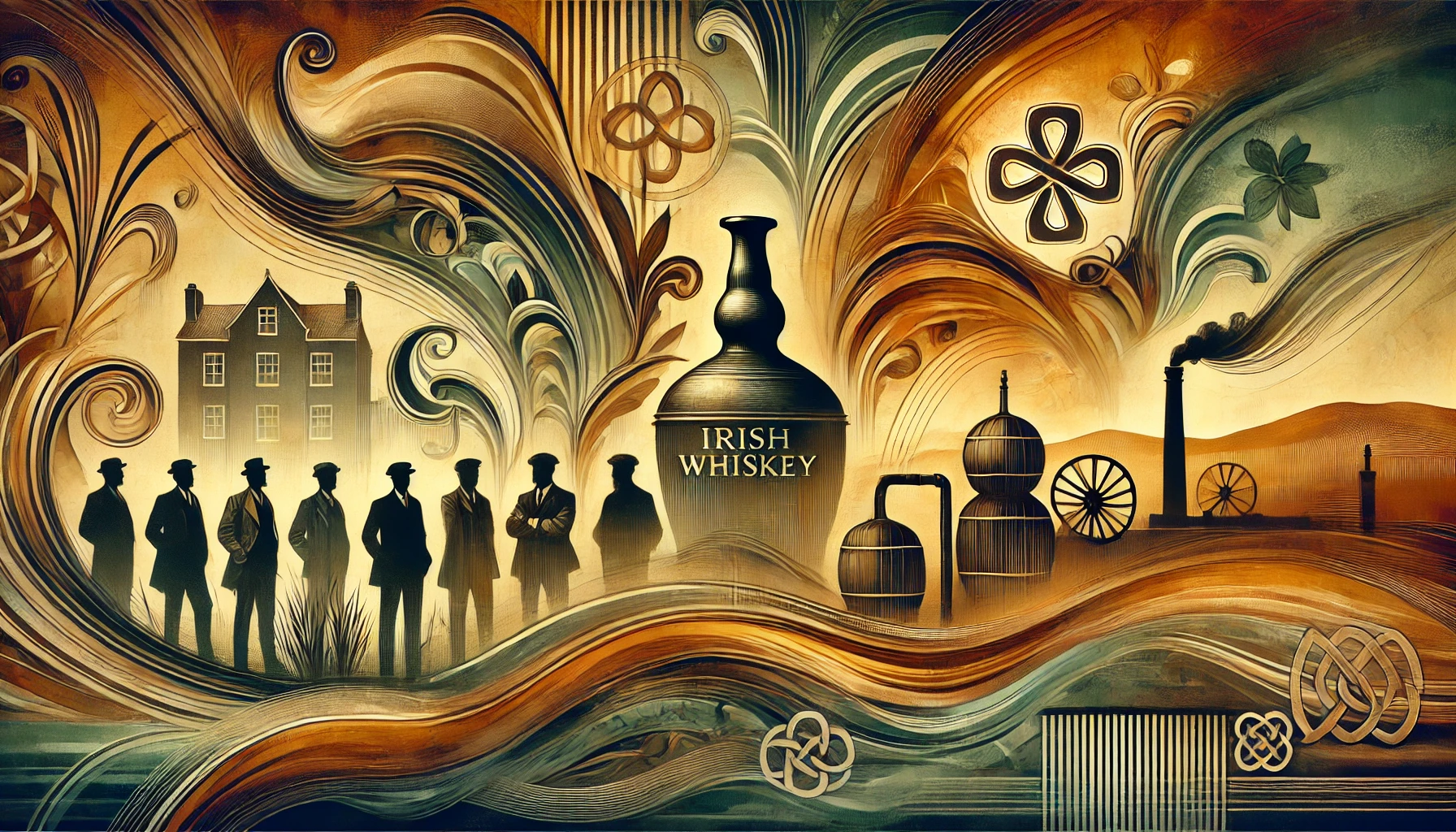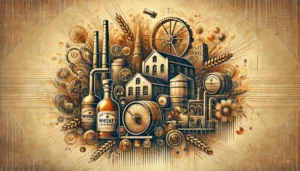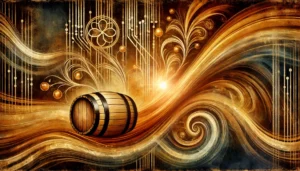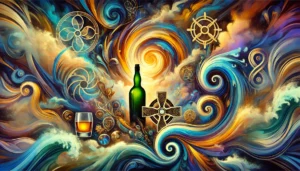An exploration into the legends who shaped the history of Irish whiskey.
Introduction
Irish whiskey has a storied past, interwoven with tales of passion, resilience, and innovation. From ancient monks distilling the first uisce beatha to modern pioneers reviving traditional methods, the history of Irish whiskey is as rich and smooth as the spirit itself. For the Irish whiskey enthusiast, understanding the key figures who have shaped this journey adds depth to every sip. In this article, we’ll delve into the lives and legacies of the people who made Irish whiskey what it is today, exploring their contributions and the indelible marks they’ve left on this iconic industry.
Table of Contents
Granting the License to Distill
Once the Largest Distillery in Ireland
Revolutionizing Whiskey Production
- Bernard Walsh and Irishman Whiskey
- The Modern Innovators
- Women in Irish Whiskey
- Global Influence of Irish Whiskey
- Traditional vs. Modern Techniques
- The Future of Irish Whiskey
The Origins of Irish Whiskey
The Monastic Beginnings
The history of Irish whiskey dates back to the 12th century when Irish monks, returning from travels in the Mediterranean, brought back the knowledge of distillation. They adapted this technique to create uisce beatha, meaning “water of life,” which is the Gaelic term for whiskey. These early distillers laid the groundwork for what would become a cherished national spirit.
The monastic communities played a crucial role in refining distillation techniques. Using locally sourced grains and pure Irish water, they produced spirits that were initially used for medicinal purposes. Over time, the popularity of this “water of life” spread beyond the monasteries, becoming a staple in Irish culture.
Unique Insight: While Scotch whisky often takes the spotlight, it’s fascinating to note that Irish whiskey predates Scotch whisky by several centuries. The Irish were the pioneers of whiskey distillation in the British Isles, a fact that underscores their significant contribution to the world of spirits.
Sir Thomas Phillips and the Old Bushmills Distillery
Granting the License to Distill
In 1608, Sir Thomas Phillips, a landowner and governor in County Antrim, was granted a royal license by King James I to distill whiskey. This license is one of the oldest on record and is proudly claimed by the Old Bushmills Distillery, making it the world’s oldest licensed whiskey distillery.
Phillips was instrumental in formalizing the production of Irish whiskey in the region. The distillery he established harnessed the pristine waters from the River Bush and local barley, setting a standard for quality that persists to this day.
Unique Insight: The Old Bushmills Distillery not only survived centuries of political upheaval and economic challenges but also became a symbol of resilience in the Irish whiskey industry. Its continuous operation highlights the enduring appeal of traditional distillation methods.
John Jameson: The Man Behind the Name
The Jameson Legacy
No discussion about Irish whiskey is complete without mentioning John Jameson. In 1780, Jameson, a Scottish lawyer who married into the Haig family (another distilling dynasty), took over the Bow Street Distillery in Dublin. Under his leadership, Jameson became one of the most successful and internationally recognized Irish whiskey brands.
Jameson’s focus on quality was legendary. He insisted on sourcing the finest ingredients and was known for his hands-on approach, often working alongside his employees. This commitment helped establish a reputation that allowed Jameson whiskey to flourish, even as the industry faced numerous challenges.
Unique Insight: Contrary to popular belief, John Jameson was not Irish by birth but embraced Ireland as his home. His integration into Irish society and impact on its whiskey industry exemplify how passion transcends national boundaries.
The Power Family and the Rise of Powers Whiskey
Innovations in Distillation
The Power family, led by James Power, established the John’s Lane Distillery in 1791. Powers Whiskey became renowned for its triple-distilled pot still whiskey, which set it apart from competitors. Their innovations included the introduction of the miniature bottle, making whiskey more accessible to the masses.
Unique Insight: Powers was among the first to recognize the importance of branding and marketing in the whiskey industry, paving the way for modern marketing strategies that many distilleries employ today.
The Roe Family and the Thomas Street Distillery
Once the Largest Distillery in Ireland
The Roe family, with patriarch George Roe, operated the Thomas Street Distillery, which at its peak was the largest in Ireland. The distillery was an industrial marvel of its time, contributing significantly to Dublin’s economy and the global presence of Irish whiskey.
Unique Insight: The Roe family’s decline mirrored that of the Irish whiskey industry during the early 20th century, illustrating the vulnerabilities even the largest players faced amid global economic shifts and changing consumer tastes.
Alfred Barnard’s Influence
Documenting the Distilleries
Alfred Barnard, an English author, toured over 150 distilleries in the British Isles during the 1880s, documenting his findings in “The Whisky Distilleries of the United Kingdom.” His work provided invaluable insights into Irish distilleries of that era, many of which no longer exist.
Unique Insight: Barnard’s writings offer a rare glimpse into 19th-century distillation processes, many of which have been lost to time. His detailed accounts are a crucial resource for modern historians and distillers aiming to revive traditional methods.
Aeneas Coffey and the Patent Still
Revolutionizing Whiskey Production
Aeneas Coffey, a former Inspector General of Excise in Ireland, patented the Coffey still in 1830. This continuous distillation method allowed for more efficient production and higher yields of whiskey, albeit at the expense of some flavor complexity compared to traditional pot stills.
Unique Insight: Ironically, while Coffey was Irish, his invention was embraced more by Scotch whisky producers. Irish distillers largely rejected the Coffey still, preferring traditional pot stills—a decision that some argue contributed to their decline as Scotch whisky gained global dominance.
The Impact of Prohibition and War
Decline of Irish Whiskey
The early 20th century brought significant challenges: the Irish War of Independence, Prohibition in the United States, and trade wars with Britain. These factors severely impacted Irish whiskey exports, leading to the closure of many distilleries.
Unique Insight: The decline was not just economic but also cultural, as Irish whiskey lost its prominence on the global stage, overshadowed by Scotch whisky and American bourbon. This period highlights the fragile nature of the industry amid geopolitical shifts.
The Revivalists: John Teeling and Cooley Distillery
Breaking the Monopoly
In 1987, John Teeling founded the Cooley Distillery, breaking the monopoly held by Irish Distillers. Cooley revitalized the industry by reintroducing independent competition and reviving historical brands.
Unique Insight: Teeling’s entrepreneurial spirit sparked a renaissance in Irish whiskey, inspiring a new generation of distillers and brands. His efforts proved that innovation and competition could breathe new life into a stagnant industry.
Bernard Walsh and Irishman Whiskey
Crafting Premium Blends
Bernard Walsh, founder of Walsh Whiskey, launched The Irishman and Writers’ Tears brands, focusing on premium, handcrafted whiskeys that celebrate traditional recipes. His dedication to quality and authenticity has earned international acclaim.
Unique Insight: Walsh’s emphasis on storytelling and heritage has helped Irish whiskey regain its premium status in the global market, appealing to enthusiasts seeking a deeper connection with their spirits.
The Modern Innovators
New Distilleries and Trends
The 21st century has seen a surge in new distilleries across Ireland, such as Teeling Whiskey Distillery, Dingle Distillery, and Glendalough Distillery. These innovators experiment with cask finishes, organic grains, and sustainable practices, reflecting evolving consumer preferences.
Unique Insight: The modern wave of distilleries is not just reviving old traditions but also pushing boundaries, blending heritage with innovation to create unique expressions that cater to a global audience.
Women in Irish Whiskey
Rising Influence
Women have increasingly taken prominent roles in the industry, from master distillers like Helen Mulholland at Bushmills to entrepreneurs like Louise McGuane of JJ Corry Irish Whiskey. Their contributions are reshaping the landscape of Irish whiskey.
Unique Insight: The inclusion of women is diversifying the industry, leading to new perspectives and innovations in whiskey production. This shift also reflects broader societal changes towards gender equality.
Global Influence of Irish Whiskey
Cultural Impact
Irish whiskey has had a significant cultural impact, featuring in literature, music, and film. Its global resurgence is a testament to its enduring appeal and the strength of Irish culture.
Unique Insight: The global St. Patrick’s Day celebrations often center around Irish whiskey, highlighting its role in promoting Irish heritage worldwide. This cultural integration has helped Irish whiskey become synonymous with celebration and camaraderie.
Traditional vs. Modern Techniques
The Evolution of Distilling
While traditional pot still methods remain cherished, modern distillers are embracing new technologies and techniques to enhance flavor profiles. The balance between tradition and innovation is a hallmark of the current Irish whiskey scene.
Unique Insight: This evolution reflects a dynamic industry that respects its roots while adapting to contemporary tastes, ensuring that Irish whiskey remains relevant and exciting for new generations of enthusiasts.
The Future of Irish Whiskey
Predictions and Trends
With continued growth, the future looks bright. Trends point toward more single pot still expressions, unique cask finishes, and sustainable practices. The industry is poised to reclaim its historical position as a leader in the global spirits market.
Unique Insight: The commitment to quality, innovation, and storytelling will likely drive the next chapter in the history of Irish whiskey, inviting enthusiasts worldwide to be part of its unfolding story.
Custom Image Concepts
- Timeline Infographic of Irish Whiskey History
- Description: A vertical timeline showcasing key milestones in the history of Irish whiskey, starting from the 12th-century monastic distillation to modern-day innovations. Each milestone features a brief description and an image or icon representing the event.
- Alt Text: “Timeline infographic depicting the key figures in the history of Irish whiskey”
- Map of Ireland Highlighting Major Distilleries
- Description: A map of Ireland with markers indicating the locations of significant distilleries discussed in the article, such as Bushmills, Jameson, Powers, and modern distilleries like Teeling and Dingle.
- Alt Text: “Map of Ireland showing major distilleries in the history of Irish whiskey”
- Portrait Collage of Key Figures
- Description: A collage featuring illustrations or portraits of key figures like John Jameson, Sir Thomas Phillips, Aeneas Coffey, and modern innovators like John Teeling and Bernard Walsh.
- Alt Text: “Collage of key figures who shaped the history of Irish whiskey”
Quick Takeaways
- Irish whiskey’s origins trace back to 12th-century monks who pioneered distillation in Ireland.
- Sir Thomas Phillips established the world’s oldest licensed distillery, the Old Bushmills Distillery, in 1608.
- John Jameson elevated Irish whiskey’s global reputation through his commitment to quality and innovation.
- Aeneas Coffey’s invention of the Coffey still revolutionized distillation, impacting whiskey production worldwide.
- Modern revivalists like John Teeling reignited the industry, leading to a resurgence of Irish whiskey on the global stage.
- Women are increasingly influential in Irish whiskey, bringing fresh perspectives and driving innovation.
- The future of Irish whiskey is bright, with trends favoring a blend of traditional methods and modern techniques.
Conclusion
The history of Irish whiskey history is woven with the threads of visionary individuals who dared to innovate and persevere. From the monastic beginnings to modern trailblazers, each key figure has contributed to the spirit’s legacy, shaping it into a symbol of Irish heritage and craftsmanship. As Irish whiskey enthusiasts, understanding these stories deepens our appreciation for every dram we enjoy.
The industry’s resurgence is not just a revival but a renaissance that blends tradition with innovation. Whether it’s savoring a classic Jameson or exploring a new offering from a boutique distillery, there’s never been a more exciting time to be part of the Irish whiskey community.
So, why not raise a glass to these pioneers and explore the diverse world of Irish whiskey? Visit your local distillery, try a new label, or share your favorite whiskey story. Your journey into the history of Irish whiskey is just beginning.
Frequently Asked Questions
1. What is the oldest licensed whiskey distillery in Ireland?
The Old Bushmills Distillery, licensed in 1608, is the oldest licensed whiskey distillery in Ireland and the world.
2. Who was Aeneas Coffey, and why is he important to Irish whiskey?
Aeneas Coffey was an Irish inventor who patented the Coffey still, a revolutionary continuous distillation apparatus that increased efficiency in whiskey production.
3. How did Prohibition affect the Irish whiskey industry?
Prohibition in the United States severely impacted Irish whiskey exports, leading to a decline in sales and the closure of many distilleries in Ireland.
4. Who are some modern innovators in the Irish whiskey industry?
Modern innovators include John Teeling of Cooley Distillery and Bernard Walsh of Walsh Whiskey, who have revitalized the industry with new distilleries and premium brands.
5. What role have women played in the history of Irish whiskey?
Women have increasingly taken on significant roles in the industry, from master distillers to entrepreneurs, contributing to innovation and diversity in Irish whiskey production.
Share Your Thoughts!
We hope you enjoyed this journey through the history of Irish whiskey and the remarkable figures who shaped it. Which key figure inspires you the most, or is there someone you think we should have included? We’d love to hear your thoughts! Please leave a comment below and share this article with fellow whiskey enthusiasts.
References
- Irish Whiskey Association. (2020). The History of Irish Whiskey. Retrieved from IrishWhiskeyAssociation.ie
- Barnard, A. (1887). The Whisky Distilleries of the United Kingdom. A rare documentation of 19th-century distilleries.
- Teeling Whiskey Distillery. (2021). Our Story. Retrieved from TeelingWhiskey.com
Note: This article is intended for informational purposes and reflects historical accounts up to the year 2023.








Be First to Comment